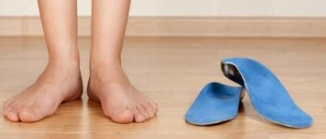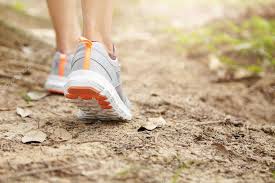Stepping into the Future: Wearable Technology in Podiatry
May 1 2025
The Future of Foot Care Is Wearable!
From smart insoles to motion-tracking wearables, technology is literally changing the way we step into better foot health!
📊 Monitor gait & balance in real-time
🦶 Prevent diabetic foot ulcers
🏃♂️ Help athletes recover & perform better
🙌 Empower YOU with real data!
Whether you’re managing foot pain, recovering from surgery, or just want to move better—wearable tech could be your new BFF
As a practicing podiatrist for over a decade, I’ve seen technology transform nearly every aspect of healthcare. From advanced imaging techniques to minimally invasive surgeries, we’ve come a long way. But perhaps one of the most exciting developments in recent years is the rise of wearable technology – and its profound implications for foot and ankle care.
Podiatry has always been rooted in biomechanics. Understanding how a patient moves – how they walk, run, stand, and distribute their weight – is critical to diagnosing and treating a wide range of conditions, from plantar fasciits and flatfoot to diabetic foot ulcers and overuse injuries. Until recently, much of this analysis relied on in-office gait evaluations, force plates, and educated guesswork. Now, wearable devices are taking that understanding to a whole new level.
DATA THAT MOVES WITH YOU
Wearable technology offers what I like to call “real-life biomechanics.” Devices like pressure-sensing insoles, smart socks, and motion-tracking wearables provide continuous, real-time data as patients go about their daily lives – not just during a brief clinic visit. This is a game-changer.
For example, pressure-measuring insoles can detect areas of excessive force on the bottom of the foot – key information for patients at risk of diabetic foot ulcers. By identifying these hotspots early, we can intervene with offloading strategies, custom orthotics, or footwear changes before wounds even form. That’s proactive medicine, and it can prevent amputations.
intervene with offloading strategies, custom orthotics, or footwear changes before wounds even form. That’s proactive medicine, and it can prevent amputations.
Similarly, motion sensors that track step count, gait symmetry, stride length, and balance can help assess fall risk in elderly patients or monitor post-surgical recovery. We’re no longer limited to what we see in the office. We get to observe trends over time, in the real world.
Personalized Treatment Plans
Wearables also allow for more personalized care. Every foot is unique, and every patient moves differently. By collecting individual data, we can tailor interventions more precisely. Whether it’s adjusting orthotics based on gait data or refining rehabilitation exercises based on movement feedback, we’re now in an era where treatment is becoming truly bespoke.
As someone who regularly treats athletes, I find this particularly exciting. Runners, for example, often suffer from repetitive stress injuries due to improper form, poor biomechanics, or overtraining. Wearables can identify subtle gait irregularities that contribute to these problems – before they turn into injuries. By sharing this data with physical therapists, coaches, and even the patients themselves, we can collaborate more effectively and reduce downtime.
suffer from repetitive stress injuries due to improper form, poor biomechanics, or overtraining. Wearables can identify subtle gait irregularities that contribute to these problems – before they turn into injuries. By sharing this data with physical therapists, coaches, and even the patients themselves, we can collaborate more effectively and reduce downtime.
Empowering Patients
One of the less discussed but equally important benefits of wearable tech is its ability to empower patients. When people see tangible data – graphs of their step counts, pressure maps of their feet, or feedback on their balance – it makes their condition more understandable and their treatment goals more tangible.
Patients become more engaged. They ask better questions. They’re more likely to comply with recommendations. And when they see progress on their wearable device, they’re often more motivated to stick with rehab programs or lifestyle changes. It fosters a partnership between doctor and patient, grounded in shared information.
Challenges and Considerations
Of course, like any technology, wearables aren’t without their challenges. Not all devices are created equal, and accuracy can vary. We must be careful to choose tools that are evidence-based and and clinically validated. There’s also the issue of data overload. As clinicians, we need to filter what’s useful and relevant from what’s simply noise. The goal isn’t just to collect data – it’s to interpret it meaningfully and integrate it into our care plans.
Privacy is another concern. Wearables collect sensitive health information, and we must ensure that both we and the device manufacturers handle that data responsibly. Patients need to be informed and confident in how their information is used.
Finally, there’s the human element. Technology should enhance care, not replace the clinical intuition, experience, and empathy that define good podiatry. Wearables are a tool – powerful, yes, but still just a tool. The art of medicine remains in how we use it.
Looking Ahead
The future of podiatry will likely be deeply intertwined with wearable technology. I envision a time when every patient with diabetes wears a smart insole that alerts them – and their podiatrist – at the first sign of risky pressure patterns. A time when post-op patients use motion trackers that detect abnormal recovery patterns before complications arise. A time when routine check-ups include reviewing wearable data alongside X-rays and clinical exams.
Research is advancing quickly. We’re seeing studies on how wearable feedback can improve balance in Parkinson’s patients, how AI can analyze gait data for early signs of neurological disease, and how continuous plantar pressure monitoring can aid in ulcer prevention. The possibilities are vast.
As a podiatrist, I’m excited to be part of this technological evolution. My job is to keep people on their feet – literally – and wearable technology helps me do that more effectively, more proactively, and moe personally than ever before.
We’re not just treating feet anymore. We’re treating movement, balance, pressure, and performance – and we’re doing it with more insight than ever before. The future is wearable, and in podiatry, that future is already at our feet.
If your are experiencing foot pain, contact Dr. Altepeter’s office at (239) 430-3668 (FOOT) or visit  www.NaplesPodiarist.com to schedule your appointment online.
www.NaplesPodiarist.com to schedule your appointment online.
Serving Southwest Florida Since 2005, Family Foot & Leg Center has 9 convenient locations throughout Collier, Lee, Charlotte, and Sarasota Counties. Offering pediatric to geriatric family care: Ingrown Toenails, Heel Pain, Bunions, Foot / Ankle Arthritis Pain, Plantar Fasciitis, Foot / Ankle Surgery, Custom Orthotics, and Diabetic Wound Care. In office X-rays, ultrasounds, and minor surgical suite exam rooms. Practice powered by EMR and advanced technologies. Home of the Lam Minimally Invasive No-Scar Bunion Surgery! Come Discover Why Patients Love Our 5-Star Foot & Ankle Care! Same Day Appointments! Easy Online Appointment Scheduling.

 Fax: (239) 692-9436
Fax: (239) 692-9436 Tel: 239-430-3668
Tel: 239-430-3668